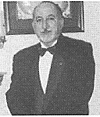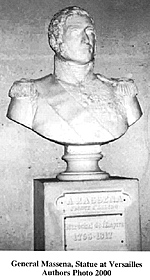A Tapestry of Kings,
Fools, and Traitors
The Formation and Fall
of the Parthenon Republic
of Naples in 1799
The Parthenopean Republic of Naples
by Robert Fletcher, USA
| |
In the following days to tranquilize the populace, Championnet discouraged looting, encouraged city shops to re-open, posted guards throughout the city, and attended Te Deum mass at the main city church. Neapolitan Jacobins returned into the city and received approval from Championnet to forrn a provisional government, divided into six committees under a president. Under the new Parthenopean Republic, one of the first proposals was to reconstitute an army and a navy for protection. The new Republic's army consisted mostly of a rabble, former Bourbon troops, Civic guardsmen, and the former navy in ruins. The Provisory Committee on 24 Piovose (12 February 1799) decreed "the National Guard will be composed of 2 battalions of 6 companies each." Further in the Republic's proposed constitution (title IX), "the National Guard shall be divided into sedentary (reserve) and active components". Article XVIII stated, "The Active National Guard shall be considered as troops of the line". Four companies were formed and installed in Naples, under Citizen General Agememnon Spano, who was later relieved by General Francesco Bassetti. The Parthenopean forces were later supposed to total six infantry legions, each of two battalions, and three regiments of horse. Few of the proposed units were brought up to full strength and the cavalry lacked many horses. The French reviewed three legions of National Guard troops in Naples on March 30, making little comment. For the Navy a number of unburned gunboats and cannon were recovered along with adequate stores. Championnet's fall and The New Republic's Unhappiness In the meantime, the Directory, looking at Naples as merely a temporary acquisition requested Championnet to acquire the obligatory sums of tribute, to be forwarded to France. Championnet requested the new Republic to pay the indemnity even though he and several generals were not of the same opinion of the Directory's orders. Charnpionnet wrote the Directory in an attempt to reason for some type of compromise. Exasperated, he expelled the Directory Commissary Faypoult from Naples on February 6th. Like his predecessor, who fought with the Directory commissaries, Championnet was soon relieved from command. Championnet departed Naples in mid-March to give account of his actions to the Directory with General McDonald again replacing the commander. Championnet received yet another surprise on his arrival in Milan, where the Directory had him arrested for insubordination. (Arrested and held in Grenoble, he was released with the fall of the government and reinstated by the new Minister of War Bernadotte, Championnet was unable to continue in his career as he sickened and died on January 9, 1800) Commissary Faypoults' return to Naples created problems for the new Republics empty treasury with bills for the cost of the French Army of Naples and tribute to the Directory for liberating Naples. Faypoult was later relieved and a new Directory Commissary Bodard was more accommodating with the Republic's payments to the Directory. In Sicily, the Bourbons were kept current with the internal situation inside the city of Naples while large areas of the Abruzzi, Calabria, and Puglia regions remained unpacified by the French. Admiral Nelson remained in Palermo with the Bourbon court and the Hamiltons, while the British fleet sortied up and down the Neapolitan coastline. Bourbon Admiral Caracciolo and a number of other Neapolitan nobles and businessmen, who had fled to Palermo, requested the King's permission to return to Naples to look after businesses and personal matters. These requests were granted and many provided a source of communication from King Ferdinand and the Queen to Naples. A Revolt in Progress Calabria was still not completely under French control and the great majority of Calabrians remained faithful Bourbon subjects. Cardinal Fabrizio Ruffo, a native Calabrian religious figure esteemed by the local feudal populace, proposed to take advantage of the pro-Bourbon sentiment. He approached King Ferdinand for permission to organize an expedition to Calabria to raise the people against the French and Republicans. The King approved and appointed Ruffo as Bourbon general with full regent powers and provided a very limited amount of funding. On the 7th of February, Ruffo and a small band of followers landed outside the town of Reggio, Calabria. Ruffo sent out messengers calling for a "Holy" crusade, and within a few days, hundreds of villagers, farmers, serfs, bandits, and priests, answered his call. Cardinal General Ruffo, quickly found gathered an armed mass of 10,000 men and in an attempt to give it some type of organization, formed units composed of men from each local area. Each unit varied in strength and depended on the local bonds to hold it together. He then named the army calling it, "The Christian Army of the Holy Faith" (Armata Cristiana Della Santa Fede) its men being referred to as "Sanfedisti". Badly armed and poorly uniformed, the Sanfedisti were greeted by every town as liberators in every Calabrian town. French outposts fled as did most Republicans imagined or real. Ruffo's army advanced without problem, March 7 at Catanzaro, March 15 at Cosenza, and a week later at Crotone. As each city or town fell, all Jacobin supporters were subject to depredations and tortures of every sort. Being rich usually led to being called a Republican and Ruffo found that he was unable to prevent these excesses more and more, as the army continued to grow. Pro-Republican towns performed similar atrocities in some cases, the town of Altarnura being cited by Ruffo as having massacred 40 Bourbon supporters. King Ferdinand in Palermo sent messages to the army encouraging the massacre of Jacobins and Republican supporters and supporting any and all anti-Republican excesses. Meanwhile In Northern Italy, Palermo, and Calabria Outside of Italy events came about that further influenced the sort of the new Republic. On March 12, Austria declared war on France and in Germany, Archduke Charles defeated French General Jourdan.
In Switzerland Massena was conducting military operations and in Northern Italy the French were also defeated by Austrian forces. The Piedmont region was declared annexed to France and the Cisalpine republic remained a strong French ally. With French hands tied with problems in Northern Italy, the Republic of Rome began to have problems with anti-French bandits, guerrillas, and the insurrection of several towns. French control became relegated to the cities and anti-French anarchy ruled the countryside. In Arezzo, an Anti-French Holy Army, much like that of Cardinal Ruffo, formed and started killing and looting suspected Jacobins and those considered rich. In Palermo, the Bourbon Court followed early events of Ruffo's army with trepidation and surprise, never imagining the scope of Ruffo's successes. Ruffo's advance was forced to halt, his successes within Calabria were considered miraculous. But parts of his army disbanded themselves as for them Calabria liberated, meant the war was over. The Cardinal was forced to send out a renewed call for volunteers to follow the holy faith and once again in a week gathered nearly 15,000 men to arms. A Tapestry of Kings, Fools, and Traitors Formation and Fall of the Parthenon Republic of Naples in 1799
Naples Declares War on Rome A Neapolitan Solution To Take The City Of Naples The Parthenopean Republic of Naples Internal Problems in The Republic A Tapestry of Kings, Fools, and Traitors Back to Table of Contents -- First Empire #64 Back to First Empire List of Issues Back to MagWeb Master Magazine List © Copyright 2002 by First Empire. This article appears in MagWeb (Magazine Web) on the Internet World Wide Web. Other military history articles and gaming articles are available at http://www.magweb.com |

 General Massena, Statue at Versailles Authors Photo 2000
General Massena, Statue at Versailles Authors Photo 2000